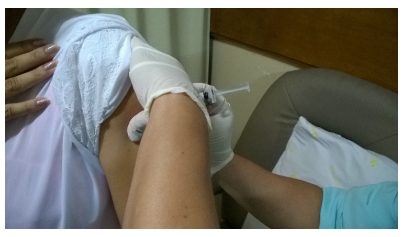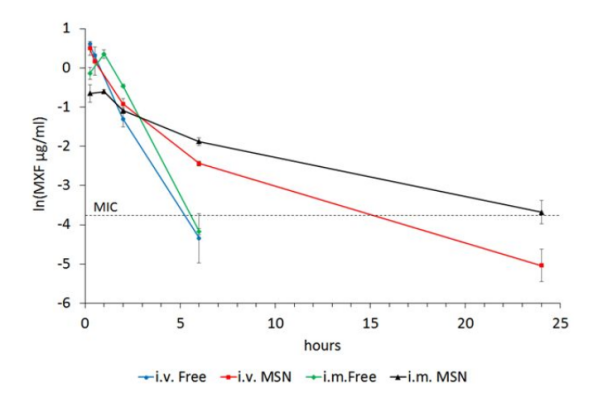 CD Bioparticles is a leading manufacturer and supplier of various drug delivery products, including metal nanostructures, biomacromolecules, synthetic polymer and biopolymers and lipid system, for R&D and commercialization in a variety of application areas. We also have developed mature technology platforms for drug delivery, such as inorganic nanomaterials, biomacromolecules, polymeric and lipid system. In addition, we can offer a wide range of custom services including drug delivery nanoparticles formulation, bioparticles analysis and characterization, and drug targeting strategy. We are dedicated to providing the most comprehensive list of products and fit-for-purpose custom analysis and synthesis services to academia as well as industrial researchers and assay developers all around the world. One of our focus areas is intramuscular (IM) route delivery which is defined as the administration of pharmaceutically active agents deep into the muscles to obtain local or systemic effects.
CD Bioparticles is a leading manufacturer and supplier of various drug delivery products, including metal nanostructures, biomacromolecules, synthetic polymer and biopolymers and lipid system, for R&D and commercialization in a variety of application areas. We also have developed mature technology platforms for drug delivery, such as inorganic nanomaterials, biomacromolecules, polymeric and lipid system. In addition, we can offer a wide range of custom services including drug delivery nanoparticles formulation, bioparticles analysis and characterization, and drug targeting strategy. We are dedicated to providing the most comprehensive list of products and fit-for-purpose custom analysis and synthesis services to academia as well as industrial researchers and assay developers all around the world. One of our focus areas is intramuscular (IM) route delivery which is defined as the administration of pharmaceutically active agents deep into the muscles to obtain local or systemic effects.
In addition to oral delivery, parenteral delivery is commonly used when a patient's condition requires, or when a quick onset of effect is desired. The route of injection selected depends on the particular drug used and the therapeutic need of the patient. There are three major kinds of parenteral delivery, namely intravenous (IV), intramuscular (IM) and subcutaneous (SC) delivery.
Generally, we would prefer the intramuscular (IM) route to delivery drugs when we meet the following cases:
1) We desire a longer effect time than intravenous (IV) injection.
2) Delivering drugs cannot be given via subcutaneous (SC) route due to high irritation.
3) Delivering drugs cannot be given intravenously due to the presence in oily solutions. Drugs that are water-soluble can be absorbed quickly from IM sites while drugs that are oil-soluble take more time (up to weeks after injection) to be absorbed.
The IM route is usually used for drugs that are not ideal for oral route due to the slow or erratic absorption. Drugs with a high percentage of drug inactivation or lacking patient cooperation are also suitable for the IM route when delivering. The factors that govern the absorption rate from an IM site are the same with those influencing GI (gastrointestinal) uptake, e.g. lipid/water partition coefficient, degree of ionization, and molecular size. However, regardless of these factors, many drugs are absorbed in almost the identical rate with some exceptions. Drugs injected into muscles with high blood flows (e.g., deltoid) can be absorbed faster than those injected into muscles with lesser flows (e.g., gluteus maximus). Exercise can markedly speed absorption rate by stimulating local circulation. On the contrary, applying ice packs or tourniquets can slow down the drug absorption. If drugs may cause pain or tissue damage at the injection site, they should not be given by the IM route. Besides, when selecting injection sites, injection volume, the presence of fascial planes, important anatomical features (e.g. vessels and nerves) and the consequences of any tissue reaction should all be considered.
Advantages:
Disadvantages:
Recently, researchers are focusing on using nanotechnology to overcome the disadvantages of IM delivery to get a better therapeutic effect. Mesoporous silica nanoparticles (MSNs) are one of those research hotspots. They possess an extremely large internal surface area which allows high drug loading, and a surface that can be easily modified for specific cells targeting and controlled drug release in response to environmental cues. Besides, nanoparticle (NP)-delivered antibiotics have numerous advantages over free drugs too. NP-delivered antibiotics can protect the drug from excretion and metabolism and improve pharmacokinetics. Although the relative contribution of various factors to the enhanced efficacy of MSN-delivered drug vs. free drug is unclear. Clemens, et al. demonstrated that IM delivered MSN-SS-MXF (moxifloxacin via disulfide snap-top redox-operated MSNs) was the most effective, and few or no MSNs were found in the lungs of mice following IM delivery. These results indicate that the nanoparticle formulation yields a longer half-life than free drug and IM delivery yields an even further prolongation of the half-life (Figure 1).

Figure 1. Blood levels of MXF (plotted as natural log of µg/ml concentrations) after IV or IM administration of 0.28 mg of MXF either as free drug or as MSN-SS-MXF. (Daniel L. Clemens, et al. (2018). ACS Infectious Diseases. 5(2):281-291.)
CD Bioparticles is specialized in the development of drug delivery systems and customizing nanoparticles for drug delivery utilizing our core technologies. With our high-quality products and services, the efficacy of your drug delivery can be tremendously improved.
We offer custom synthesis of polymer microspheres and nanoparticles. Clients may select the material type, particle size, size distribution, color dye, fluorescent dye, and/or surface functional groups such as carboxyl or amine groups. We also encapsulate proteins, steroids, ligands, nucleic acids, and other drug molecules. Additionally, the surface coating of microspheres or nanoparticles with ligands, oligonucleotides, and other agents are available for clients to choose.
References:
1. Dowd, F. J. (2017). Pharmacokinetics. Pharmacology and therapeutics for dentistry, 15–43.
2. Maddison, J. E., Page, S. W., & Dyke, T. M. (2008). Clinical pharmacokinetics. Small Animal Clinical Pharmacology, 27–40.
3. Daniel L. Clemens, Bai-Yu Lee, Sheba Plamthottam, Michael V. Tullius, Ruining Wang, Chia-Jung Yu, Zilu Li, Barbara Jane Dillon, Jeffrey I. Zink, and Marcus A. Horwitz. (2018). Nanoparticle formulation of moxifloxacin and intramuscular route of delivery improve antibiotic pharmacokinetics and treatment of pneumonic tularemia in a mouse model. ACS Infectious Diseases, 5(2):281-291.
1. Download the template.
2. Enter product information on the template (maximum number of products: 200).
3. Load the file using selector below.
1. Download the template.
2. Enter product information on the template (maximum number of products: 200).
3. Load the file using selector below.